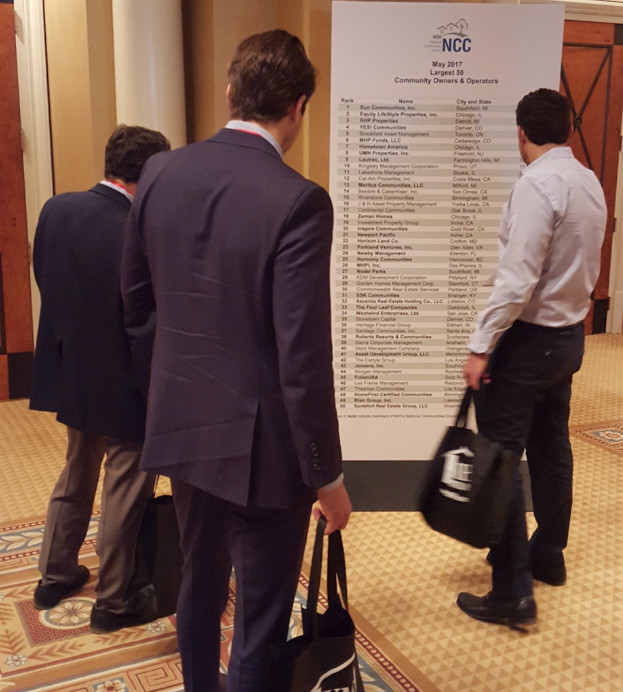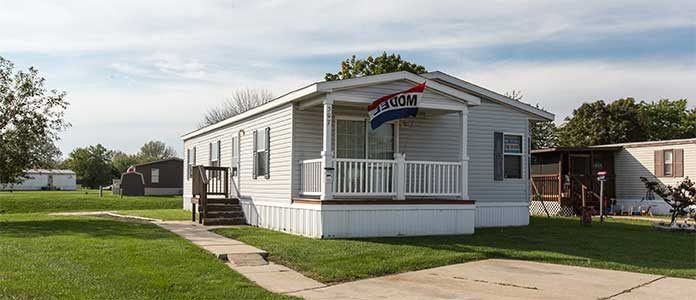Big Mobile Home Park Investing Moves Toward Finding Best Deals Before Market Levels
From Bellingham, Wash. to Newnan, Ga., Jon Harrison scans the map for just the right patch of land. He talks to brokers, owners and investors, scours county records and relies on whatever information he can gain from inside sources.
All in the name of finding the prime manufactured home community.
Harrison isn’t looking for his retirement place. He’s not looking for the simple yet ideal coastal getaway for the family. He works for Inspire Communities, not the largest of the community owners, but certainly entrenched in the top quarter of the industry.
A former broker himself, Harrison is in acquisitions, and always is looking for the perfect mix of placement and amenities that can be a great home for 200 hundred residents or more – and no less important, a stellar portfolio addition for the company owners and investors.

“The most frustrating thing right now is the increasing amount of money coming into our space, but the limited supply,” Harrison said. “There’s more money and more pressure than ever.
“That puts sellers in a good position if they’re thinking about putting some chips on the table, and that drives prices up,” he said. “This has been happening for years. Now is the time to question how long they’ll go up, or if buyers are going to push back.”
Inspire owns 23 communities in 12 states, with more than 7,000 home sites. According to the Manufactured Housing Institute, Inspire is the 20th largest community owner in the nation. Inspire also manages another 20 manufactured home communities, with more than 3,000 home sites.
Demand, Demand, Demand in Mobile Home Park Investing
Mobile home park investors who purchase communities are in rare air with today’s market. Interest rates remain low, but are on the rise. And, yes, CAP rates have been squeezed. Still, the typical set of current community owners is an aging group, looking to cash in and get out.
And the demand. Yes, the rest of the country is aging as well, and manufactured home communities are a viable option for couples or individuals who want to downsize and live safely and comfortably on fixed income.
On the opposite end of the spectrum, the middle class is shrinking and prices for traditional housing stock are on what seems like a sharp and endless rise. The median home price in Bellingham, Wash. is about $357,000, up more than 11 percent from 2016 and expected to be up another 3 percent in the next year. The median home price in Newnan, Ga. remains relatively low, at $170,500, but is on growth trajectory of approximately 5 percent annually.
This has manufactured housing retailers humming, and the communities where a home will be placed either near or at occupancy.
“People are paying amazingly high prices to buy a community, especially in California,” Harrison said. “People are paying 3 to 4 caps, and I don’t know how they make it work. That’s been the biggest surprise, is how low of a return people are willing to accept.”
The capitalization rate, or cap rate, is the figure that comes from calculating the value of a property, subtracting operating expenses and dividing by purchase price. It tells investors how much they’re likely to make from the purchase.
From the Broker
Chris Nortley is a broker for MHRE Inc. He says the key in today’s transition market is patience. If you want the traditional breadwinner, you are really going to have to wait and understand you may never find it. Or you can concede on price and find ways to feed the investment.
“You need to be realistic,” Nortley said. “I still have people calling looking for a 10 cap rate, and I say ‘Good luck, you’re not going to buy that from me.’
“You can take a 5 cap and get it to an 8 or 10 cap, especially if there is vacancy or other area for improvement,” he said. “But if something that’s filled already, it’s more like a ‘coupon clipper’, you need to know that the returns will be modest.”
Harrison said he and his group understand that the turn-key park for the sweet price likely is a thing of the past. Consider that the 9 cap in that turn-key segment several years ago is much closer to a 3 cap today.
To be clear, this means owners and investors need to spend three times as much today for the same net cash flow as you would have spent just a few years ago.
Growth Opportunity Still Exists for Owners and Investors
Many mobile home park investors concede that old expectation for a vision toward what can still feed the bottom line.
“Our plan moving forward is to cluster around existing communities,” Harrison said. “Only in Michigan and Texas do we own multiple communities. All the other places we own one community in each state.”
Inspire intends to scale up with new investors and new communities to the size where it can make an initial public offering.
“We’ve had success doing that. People who want to exit real estate, they’re transferring to our portfolio. You can do that on this side before you go public,” he said. “Most of what I’m trying to avoid is spending a lot of time on something that’s not going to grow the company. Our goal is to grow $6 million per year, and it’s very difficult to do that on a small deal here or there.”
That’s how the big investors do it.
Though, as you’ll learn, having a pile of capital in advance is convenient, but not necessary.
So, how are mid-size investors getting in the game…?
Next week, in our series – Stay tuned!










